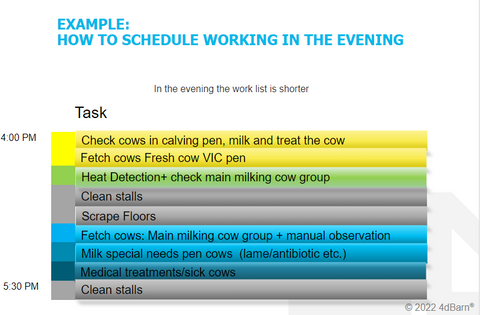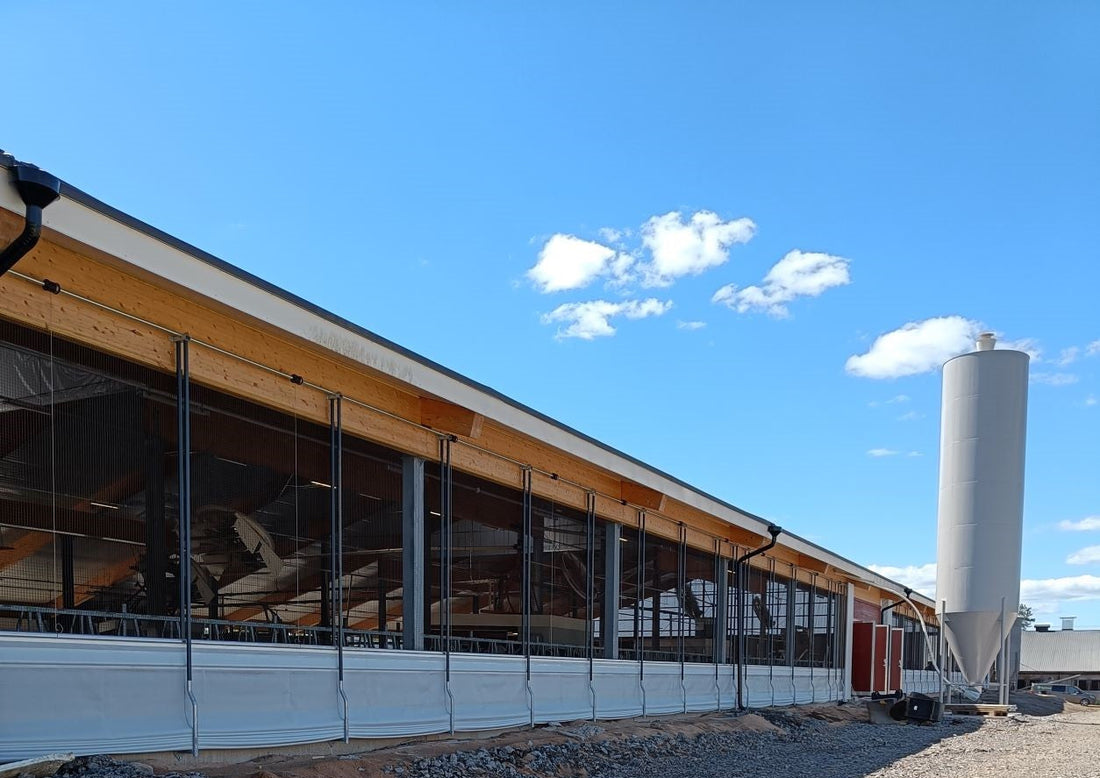Learn to become a robot farmer
Leave the old habits to the old barn .As soon as you decide to invest in robot milking you can start to train yourself. The most important thing is a new mindset and also new skills.
In a robot barn everyday life is very different compared to traditional barns. A barn with a milking parlor usually handles large groups of animals at a time, whereas a robotic barn is more about working with individual cows. Also the routine tasks are different and the schedule of working will change.
In a barn with a milking parlor and tie-stall barn, there is always a human contact and all cows are checked during milking. In a robotic barn, there is no such check. The herdsman has to be active to detect anomalies and also learn to use information provided by the automatic milking system. In a robot barn cows have to walk voluntarily - to eat, drink and to the robot. Early detection of lameness is the responsibility of herd manager. When ther robot detects that something is wrong with the cow, the cow may have been lame for a while. Lame cow is always an emergency in a robot barn and they need to be treated as quickly as possible. For that you should have a handling chute in the barn.
In a robot barn, the aim is for the operation to run so smoothly that the barn runs on its own.
When the barn is designed correctly and the routines are well thought out, the cows produce and stay healthy, so the human role is mainly to observe the barn.
Calving, dry-off, fetching cows and other routine tasks will of course still need to be done by humans. The aim is that the main milking group will be able to manage on their own without human interference.

Build your team and start designing your robot barn
When you all finally share a common vision of your barn and people working there, you have a more secure future ahead. In a robot barn, you need to understand that you must update many working routines with your herd and barn. Don´t take your old habits to a new or remodeled barn. You might accidently teach your cows bad habits. For example, there is risk that even the whole herd becomes accustomed to people pushing them towards the robot, instead of going there voluntarily themselves. There should be no more than one or three cows per robot to be fetched!

Planning new morning and evening routines can be very difficult if you have no experience of working in a robot barn. It is worth writing down a daily or weekly schedule for example. Who does what and when? This kind (Watch the working routines -video in Mäkelä's three-robot barn: Work routine in a robot barn).of practice helps you to organize routines in advantage.

Robot barn working routines
If you are planning a robot barn, you should visit as many barns as possible. Interview farmers about how they work in the barn.
- How does the placement of the robots affect the animal movement routes?
- How many groups of cows can use the robot at the same time?
- The robot provides countless reports. Which of these should be reviewed daily?
- What features and equipment should a robot barn have?
Farm visits give you valuable information. The best way to understand the robot barn working routines is to work there!
It's worth working in a few different barns to expand your understanding. You don't have to copy other farms' routines into your own barn, just pick the best ones and apply them.
Right partners like advisors and vets can help you a lot. Discussion groups are very good platforms to ask questions and change opinions. If you don't have a possibility for a longer study period at a farmer´s school you can find short courses and webinars on the website. Various training courses and online courses can also help you understand the features of a robotic barn. For example, we have created the 4dBarn Ten Point Robot Barn eCourse, which goes through the ten most important features of a barn and what to consider when designing them.
Start your preparations for the AMS and new barn early
To have steady income every month means that cows should calve evenly throughout the year. It´s easier to say than achieve it and you must start making decisions toward the goal already 2-3 years before building.
Pay attention to breeding. The cleanliness of the cows has a big impact on milk quality in a robot barn. You can start breeding “robot cows” long before the new barn is ready. When your cows are even size and the udder structure is good, cleaning the stalls is easy and cows stay clean.
You can implement new systems already in your old barn. If you plan to feed your cows with PMR (Partial Mixed Ration) in your new barn, you can start it already for the old barn. This way cows will be familiar with the feed in the new barn. PMR feeding is different from separate feeding and there are many things to consider, some of which you only learn through experience. Of course, the mix of feed will need to be adjusted with the robots, so keep in close contact with your feeding adviser.
Trust yourself, trust the robot and trust your cows! Finally, when you start robot milking, remember to let cows be cows. Serve them plenty of good quality feed, good environment, clean and soft stalls and gently handling.
Antti Puuri and Virpi Huotari

